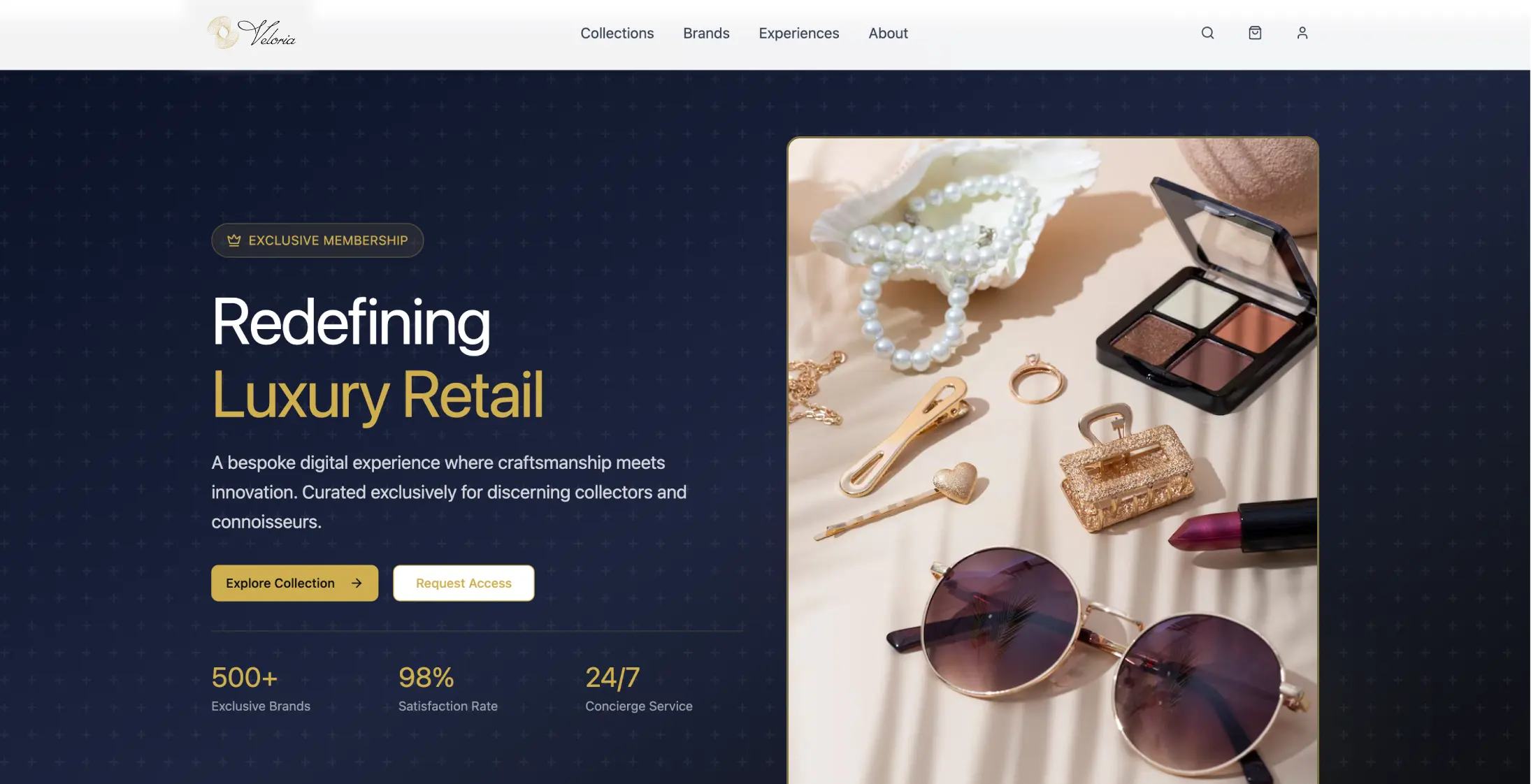
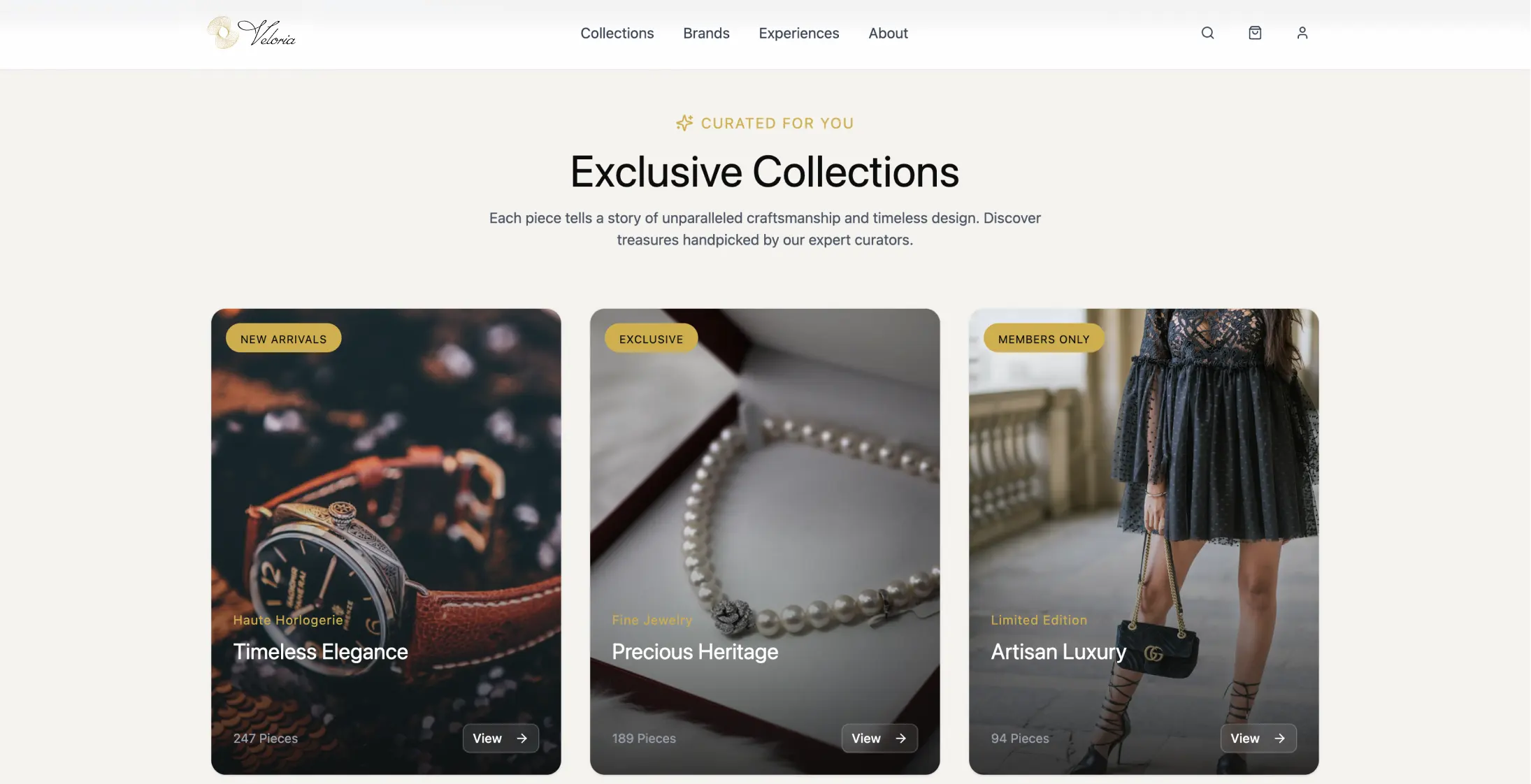
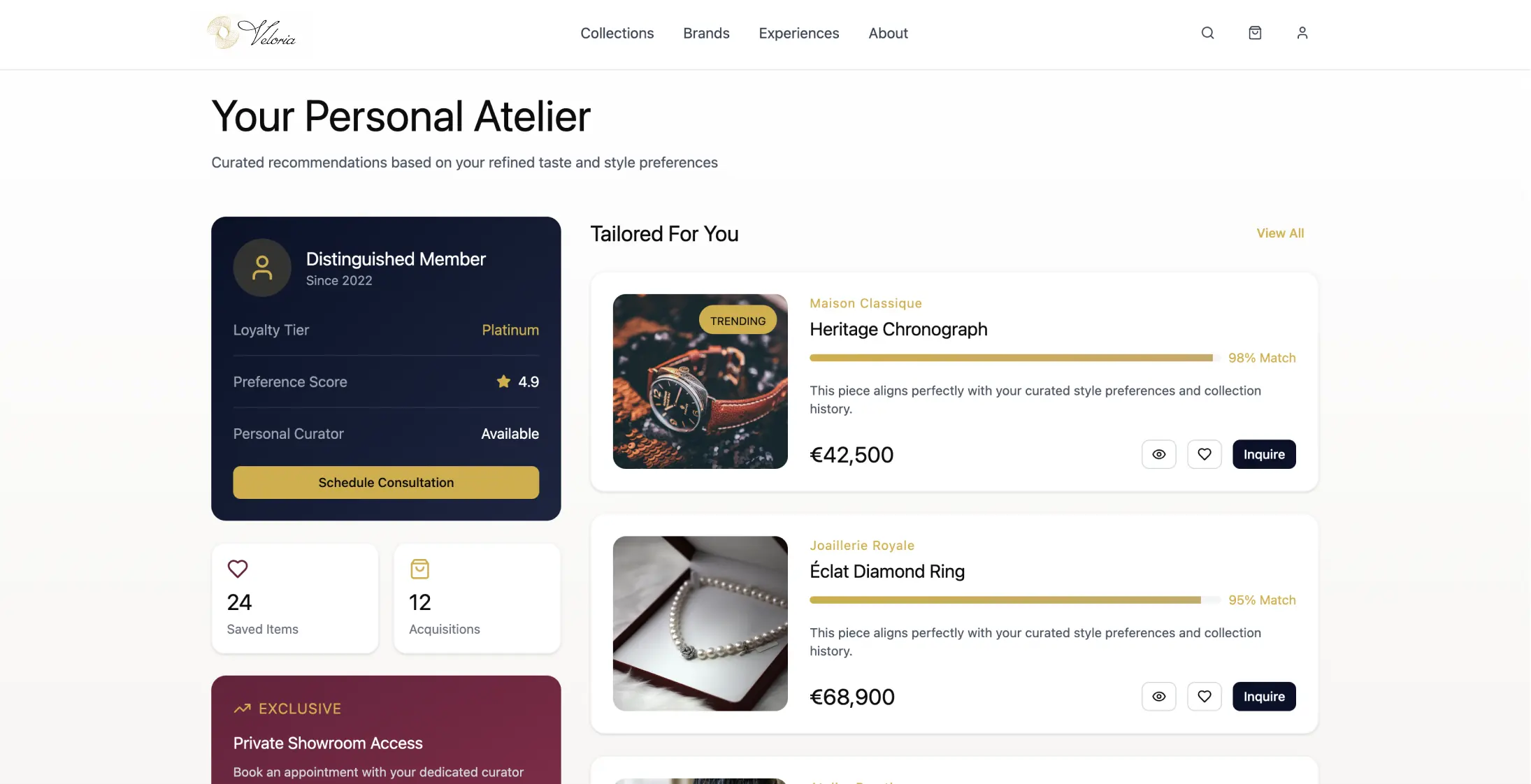
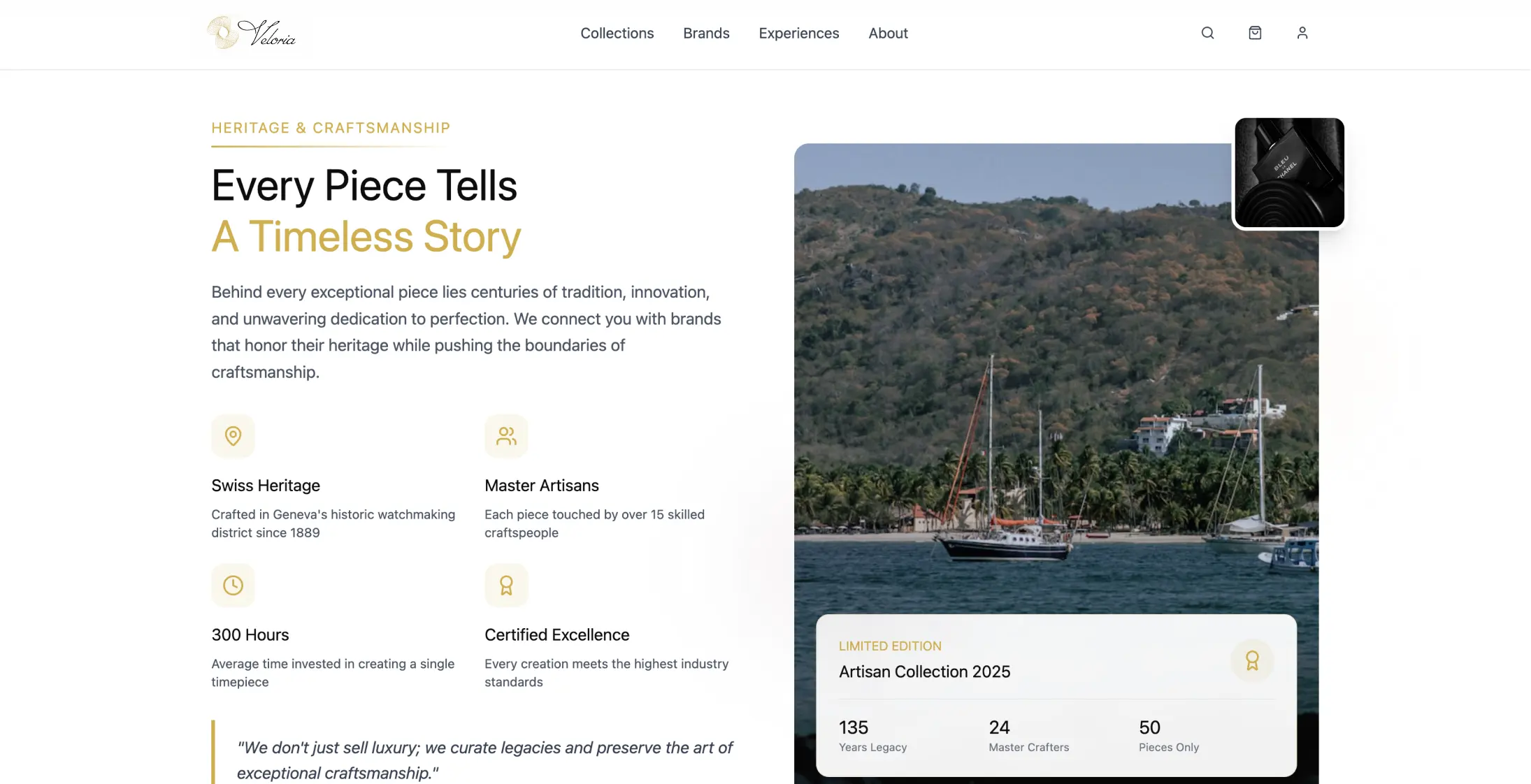
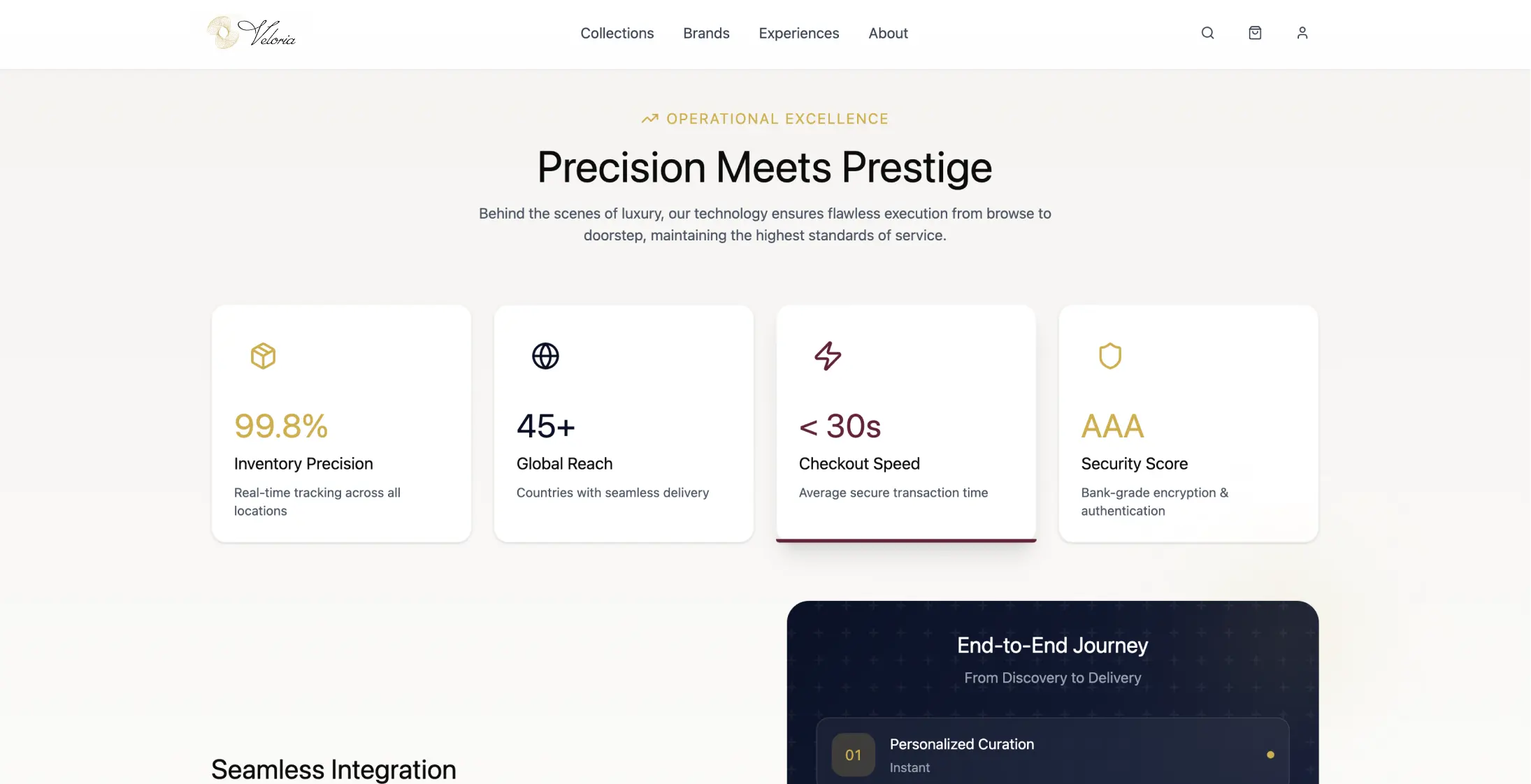
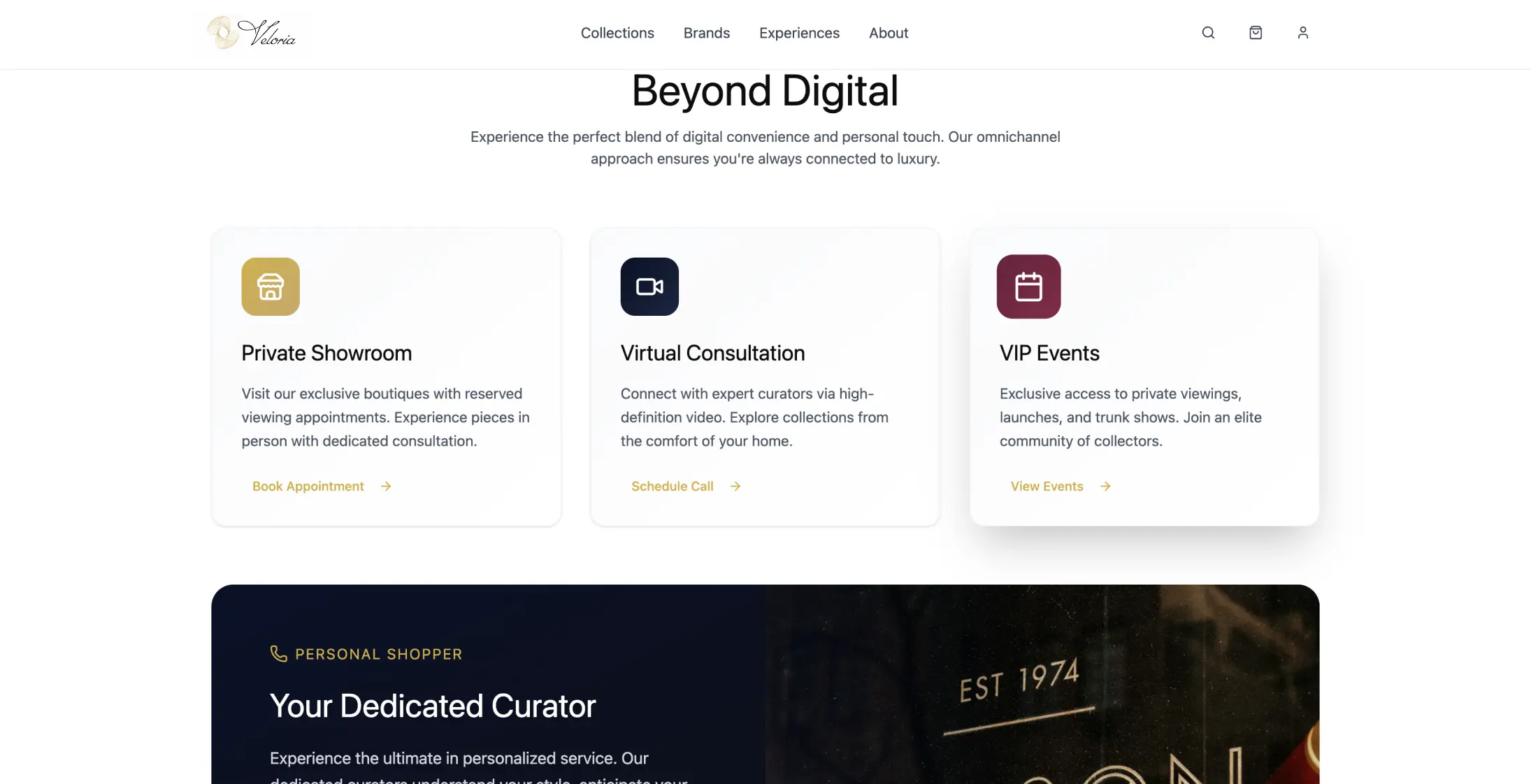
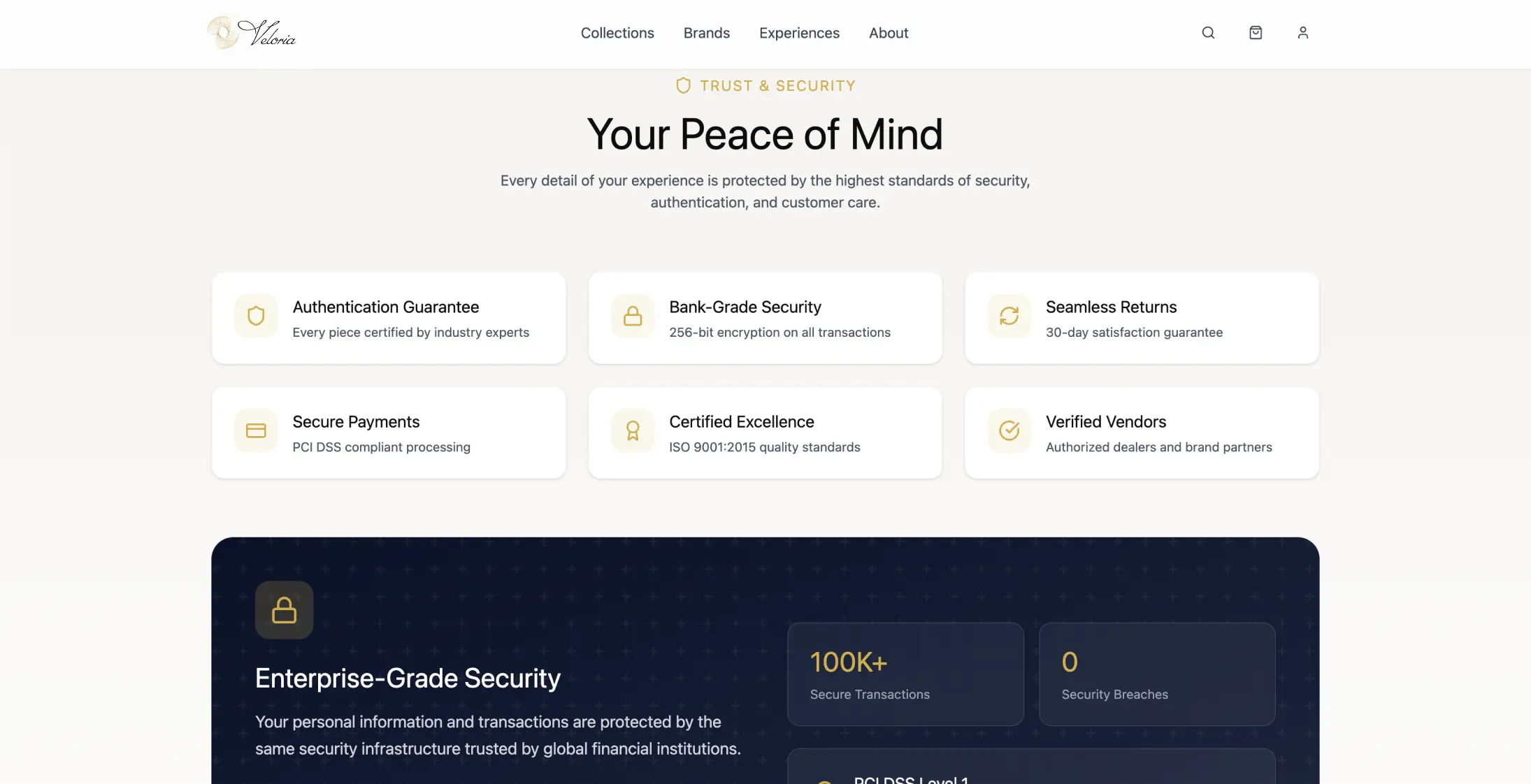
Project Overview
Luxury shoppers are seeking interactions that uphold the exclusivity and personalized touch of luxury retail stores while maintaining the prestige of top tier brands.
Implemented personalized shopping. Optimized checkout processes, resulting in a 67 percent decrease in abandoned carts.
The Challenge of Digital Transformation in Luxury Retail
The high end retail industry functions based on principles compared to mainstream shopping platforms. Unlike mass market e-commerce sites, the luxury sector focuses on building personal connections with customers through:
- Salespeople dedicated to their specific needs
- Access to exclusive limited collections
- Private showroom visits
- Curated experiences that enhance brand prestige
The shift towards digital platforms posed a significant challenge for luxury brands since their clientele expects flawless transactions, top notch security measures, and personalized service that aligns with their substantial investments.
Key Operational Requirements
Luxury companies found themselves under pressure to enhance their digital presence without compromising their brand's essence and exclusivity. They needed to meet demands like:
- Processing high worth transactions efficiently
- Managing inventory with precision allotment
- Supporting worldwide operations in various currencies and tax systems
- Upholding performance standards that mirror their premium status
Critical Problems in Traditional E-Commerce
Luxury buyers faced challenges when trying to interact with brands due to the inability of standard e-commerce sites to fully understand the intricate bond between luxury labels and their clientele.
Interface and Experience Issues
The standard e-commerce interfaces didn't meet the standards and detailed focus required for luxury settings. They presented products generically without showcasing the craftsmanship or exclusivity needed to justify premium prices. Customers received the same experience regardless of their buying history or personal preferences.
Security and Trust Concerns
Concern about security and trust was high when it came to transactions that needed stronger security measures than usual payment methods provided. Customers sought assurance in safeguarded data privacy - this was especially crucial due to the sensitive nature of luxury purchases and the personal information involved. Modern blockchain consulting approaches can provide enhanced transparency and trust.
Brand Dilution Threats
The threats of brand dilution arise when standard digital interactions compromise the carefully crafted brand image and positioning efforts. This lack of compelling storytelling methods and sophisticated presentation styles could lead to devaluation in online spaces as common goods rather than exclusive offerings.
Transform Your Luxury Brand Digital Experience
Discover how premium e-commerce solutions can elevate your brand while maintaining exclusivity.
Solution Results and Impact
Revenue Enhancement
The system boosted order values by 340% thanks to:
- Product bundling techniques
- Personalized upselling strategies tailored to each customer's preferences
- Purchase history analysis resulting in more valuable transactions for premium clients
- Specially curated collections
Customer Loyalty Improvements
Improving customer loyalty was achieved through custom interactions and exclusive content previews, leading to an 89 percent increase in retention rates compared to focusing on standard exchanges on the platform.
Brand Positioning Preservation
Sophisticated user interfaces and captivating storytelling features upheld the brand status across platforms effectively, ensuring that unique brand experiences were maintained while reinforcing premium pricing strategies.
Operational Efficiency
- Automating personalization tasks decreased the need for manual curation by 75%
- Enhanced recommendation accuracy significantly
- Efficient inventory management streamlined allocation across channels
- Prevented overstocking of exclusive items
Global Expansion
Expanding globally was made possible by supporting multiple currencies and tailoring experiences to local markets while keeping brand message intact. The platform efficiently managed tax calculations and met compliance standards in various regions.
Technical Architecture and Implementation
Core Platform Strategy
The strategy emphasized developing an environment that maintained the essential values of luxury retail while utilizing contemporary e-commerce features efficiently. Instead of modifying conventional mass market platforms, the resolution focused on constructing tailored elements designed for luxury commerce behaviors.
Customer Relationship Management
The system focused on building customer relationships and delivering personalized experiences rather than solely focusing on optimizing transactions. By leveraging machine learning algorithms to study:
- Purchasing habits
- Online behavior
- Engagement metrics
The platform developed comprehensive customer profiles that shaped every interaction throughout the system's operations.
Content and Brand Experience
The brand experience platform offered tools for content management and storytelling to help brands craft engaging experiences such as:
- Integrating interactive videos
- Interactive product showcases
- Heritage content to convey brand narratives effectively
Security and Compliance Framework
The security framework was bolstered with advanced security features such as:
- Secure payment processing
- Fraud detection algorithms
- Adherence to luxury goods regulations
- High-level risk management protocols for high-value transactions
Omnichannel Integration
The integration allows for seamless connection between digital experiences and physical retail operations by facilitating:
- In-store pickup services
- Personal shopping appointments
- Complete inventory visibility across all channels
Technical Infrastructure
Development Approach
The approach to development involved an iterative method where luxury brand collaborators offered feedback on user experience and feature advancement. This included conducting usability tests in each sprint with luxury consumers to confirm the quality of the experience provided.
Deployment and Performance
Native deployment was key to ensuring availability and top-notch performance on a global scale:
- Multi-region architecture enabled low latency access globally
- Met data residency regulations effectively
- Auto-scaling features managed traffic spikes during exclusive product launches
Testing Strategy
The testing approach included:
- Performance tests with high-value transactions in mind
- Security penetration testing
- User experience assessments involving luxury consumer focus groups
- Simulated exclusive product releases and high traffic volume scenarios
Implementation Process
The implementation process started with select brands and regions in a phased manner before expanding according to performance metrics and customer feedback. The integration with existing systems aimed to minimize disruptions to operations while ensuring continuity of data flow.
Technology Stack
Frontend Framework
React incorporating server-side rendering to enhance performance efficiency
Database Layer
- PostgreSQL for primary data storage
- Redis for caching and session management
Search and Analytics
- Luxury product search engine powered by Elasticsearch featuring custom algorithms
- Custom analytics engine with privacy-compliant tracking
Infrastructure Components
- Message Queue: Apache Kafka for event-driven architecture and real-time updates
- Monitoring Stack: Prometheus metrics collection with Grafana dashboards
- Security Tools: Vault for managing secrets and OAuth for authentication
Key Success Metrics
Revenue Per Visitor
Increase in revenue per visitor
Order Value
Boost in order values
Customer Retention
Increase in retention rates
Manual Curation Reduction
Reduction through automation
Lessons Learned
Luxury-Specific Algorithms
Creating experiences for luxury customers involves using different algorithms compared to mass market methods. The frequency of purchases may be lower in this segment; however, building relationships calls for focusing on long-term customer value rather than immediate conversions.
Performance Standards
Luxury buyers expect top-notch performance without any glitches or delays when shopping online. Even the slightest dip in performance had a significant effect on how the brand was perceived by customers.
Security Balance
Maintaining a high level of security is essential for providing a luxurious customer experience without compromising on protection standards for businesses.
In the realm of luxury online shopping, it's crucial to view technology not as just a tool but as a means of conveying your brand identity effectively to customers.
Integration and Compliance
Integration Complexity
Integrating platforms with established luxury operations posed challenges in managing data and designing workflows effectively. The process turned out to be more complex than initially expected and necessitated the development of custom middleware solutions.
Compliance Considerations
Navigating the world of luxury commerce comes with a range of tax obligations and compliance standards that differ greatly across regions. It's crucial to address these complexities in the initial architectural planning stage instead of trying to integrate compliance features later on.


